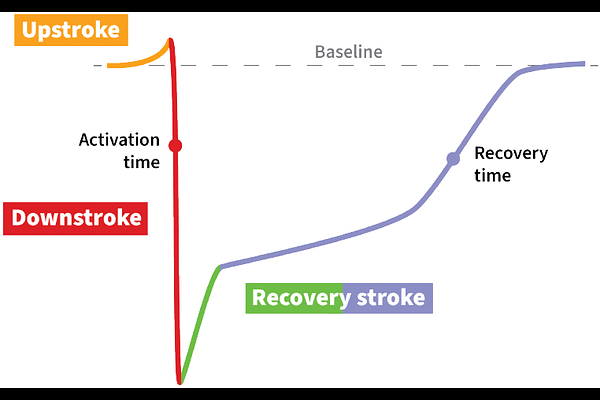A case for slow-wave morphology as a functional biomarker of gastric disease

A case for slow-wave morphology as a functional biomarker of gastric disease
Dowrick, J. M.; Erickson, J. C.; Du, P.; Angeli-Gordon, T. R.
AbstractAim: Underlying bioelectrical slow waves are critical for regulating gastric motility, and abnormal spatiotemporal slow-wave \'dysrhythmias\' are associated with a range of gastrointestinal disorders. However, the definition and role of the morphology of gastric slow-wave signals have remained limited. This study aimed to investigate the potential of gastric slow-wave morphology as an actionable biomarker. Methods: Data were repurposed from a study where, following ethical approval, a control cohort (n=9) and a pathological cohort of patients with chronic unexplained nausea and vomiting (CUNV; n=8) underwent intra-operative high-resolution serosal electrical mapping (96-256 electrodes, 4.0-5.2 mm spacing). Slow waves were identified using validated software, and spatiotemporally averaged waveforms were compared between cohorts. These waveforms were replicated in a computational model of gastric slow-wave propagation to explore potential functional implications. Results: The slow-wave morphology of the CUNV cohort exhibited a more gradual recovery stroke compared to controls, which manifested as an increase in the normalized recovery stroke area [0.206 (95% CI: 0.169-0.247) vs. 0.134 (95% CI: 0.106-0.166); p=0.011]. Computational modeling showed that these morphological differences could drive spatial slow-wave dysrhythmias. Considering the evident functional importance of gastric slow-wave morphology, we highlighted the three typical morphological features: 1) rapid, brief upstroke, 2) downstroke, and 3) biphasic recovery stroke. Conclusion: Altogether, this study presents a case for gastric slow-wave morphology as a biomarker of gastric health and disease and lays a foundation for the standardization of future slow-wave morphology research.